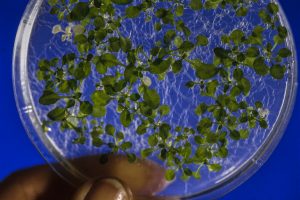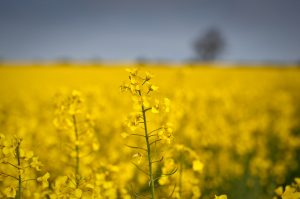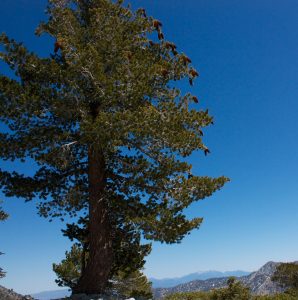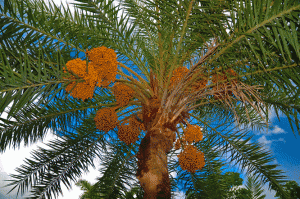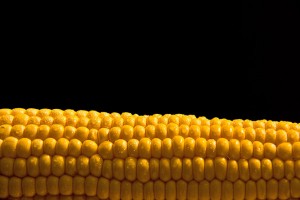Enter your address to receive notifications about new posts to your email.
Articles tagged Plants
(22 results)
-
A fly that thrives on a deadly diet
When a noni fruit ripens, it stinks like old cheese—or even vomit. Familiar to many in the form of expensive juices sold as health supplements, this pungent fruit is engaged in a slow-motion arms race with would-be insect pests. Fruit flies are unable to feast on noni—scientific name Morinda citrifolia—because the fruit is dosed with…
-
A gene linked to human obesity also controls fat deposition in plants
There’s no such thing as an obese plant. But that doesn’t mean plants can’t teach us something about fat. In the September issue of GENETICS, Ducos et al. show that a protein that controls fat accumulation in humans has a similar function in Arabidopsis. They also find that the human and plant proteins may be…
-
Gene flow from crops into weeds depends on genome location
Even though domestic plants usually appear radically different from their wild relatives, they are often still able to interbreed. For transgenic crops carrying traits like herbicide resistance, this flexibility could pose a problem if they were to pollinate weedy relatives nearby. In the July issue of GENETICS, Adamczyk-Chauvat et al. examine the extent to which…
-
Lineage specific retrotransposons shaped the genome evolution of domesticated rice
Rice is one of the most important food crops on earth. Like many other plants, the genome of this critical global species is dominated by transposable elements—selfish genes that multiply themselves to the detriment of their host. In the June issue of G3, Zhang and Gao analyze the genomic long terminal repeat (LTR) retrotransposon content…
-
MPP People: Geoffrey Morris
Multiparental populations (MPPs) have brought a new era in mapping complex traits, as well as new analytical challenges. To face these challenges and encourage innovation, the GSA journals launched the ongoing Multiparental Populations series in 2014. This month’s issues of GENETICS and G3 feature a bumper 16 MPP articles, timed to celebrate a new easy-to-use…
-
The fungus-fighting secrets hiding in the sugar pine’s enormous megagenome
Towering sugar pine trees dominate the mountain forests of California and Oregon. They are the tallest pine trees in the world, regularly growing to skyscraper heights of over 100 meters. But these forest behemoths are under attack from a very tiny foe: an invasive fungus. White pine blister rust was accidentally introduced to western North…
-
Profiling an early registrant for TAGC – Sue Rhee
Plant biologist Seung Yon (Sue) Rhee was among the first people to submit their registration for The Allied Genetics Conference (TAGC). As part of our efforts to introduce you to members of our community, meet Dr. Rhee. Seung Yon (Sue) Rhee, PhD Staff Scientist Department of Plant Biology Carnegie Institution for Science Stanford,…
-
Genetics Society of America awards Detlef Weigel the 2016 GSA Medal
Detlef Weigel (Max Plank Institute for Developmental Biology, Tuebingen) has been awarded the GSA Medal for his outstanding contributions to the field of genetics in the last 15 years. “Detlef’s blend of biology, genetics, and genomics technology has been key to many advances at the intersection of modern plant developmental and evolutionary biology”, said…
-
GSA pleased to be founding member of Plant Science Research Network
The Genetics Society of America (GSA) is pleased to be a founding member of the Plant Science Research Network (PSRN), which was launched earlier this week. This effort, supported by a Research Coordination Network award from the National Science Foundation (NSF), will seek to unite the plant science community and to harness its collective vision…
-
A “date” with the history of Phoenix dactylifera cultivation
The sticky fruit of the date palm has a tangled history. New research in G3 explores the palm’s genetic diversity and traces its earliest cultivation to at least two distinct regions in North Africa and the Arabian Gulf. The date palm (Phoenix dactylifera) is one of the world’s oldest cultivated trees and has close ties…
-
The mutation that unlocked corn kernels
If not for a single-nucleotide mutation, each kernel on a juicy corn cob would be trapped inside an inedible casing as tough as a walnut shell. In the July issue of GENETICS, Wang et al. identify an amino acid substitution that was key to the development of the so-called “naked” kernels that characterize modern corn…

![Image by Michael Hermann (Own work) [CC BY-SA 3.0], via Wikimedia Commons.](https://s36063.pcdn.co/wp-content/uploads/2018/01/Webp.net-resizeimage-19-300x225.jpg)
